Like the human body, when a lake is sick, symptoms appear.
Excessive weeds and algae blooms are warning signs of a much deeper problem with the ecosystem.
- The lake is overloaded with nutrients.
- The bottom of the lake is a compost pile.
- There’s not enough oxygen circulating from top-to-bottom.
The presence of invasive species like Zebra Mussels are warning signs that your lake is under environmental attack.
What Warning Signs Do You See?
If so, your lake is overloaded with nutrients and the bottom of your lake has become a compost pile. Eurasian water milfoil, pondweed, hydrilla and a range of other invasive species are signs of a much deeper problem. <more>
There’s good algae and toxic algae. Good algae are necessary. Blue-green algae threaten human health. What kind of algae does your lake have? <more>
If you got weeds and algae – the bottom of your lake is covered with muck. Muck is the real nutrient monster. Muck is internally fueling your lake’s weed and algal growth. How much muck does your lake have? <more>
Most experts will tell you that fish kills are a “one-time” event; a coincidence. In fact, neither is true. If the cause is not addressed immediately, it’ll happen again. Photo by USGS. <more>
Beaches close when disease-causing microorganisms (pathogens) and microcystins (blue-green algae) reach toxic levels. Children, the elderly, and people with weakened immune systems are the most vulnerable. <more>
The environmental destruction by Zebra Mussels has become a shared Canadian and US freshwater natural disaster. Conventional solutions have largerly failed. New biotechnology has emerged which will eradicate mussel populations using an all natural approach. Photo by USFWS <more>
Lake Self-Assessment: Is Your Lake in Trouble?
The more you know about what you’re seeing, the better prepared you’ll be to take the correct action to restore your lake.
We have developed a set of simple self-assessment questions that can serve as a useful first-step in diagnosing what stage of decay your lake may be in.
- If you can’t catch fish in the deepest part of the lake in the summer, your lake has a dissolved oxygen problem. This is an indication that your lake is entering into Lake Decay.
- Does your lake have excessive weed growth? Are weeds encroaching in areas of the lake where they’ve never been before? If so, your lake has an external nutrient overloading problem and is suffering from dissolved oxygen depletion. Phosphorus and Nitrogen are used in massive quantities to fertilize farm fields and lawns. These nutrients are washed into the streams, creeks and rivers which carry them to your lake. This is Stage One of Lake Decay.
- Does your lake have algae blooms and poor water clarity? If so, your lake has a more serious internal nutrient overloading problem. Dissolved oxygen levels have plummeted to the point where the lake is overloading itself with phosphorous and nitrogen as a result of decaying weeds on the lake bottom. This is Stage Two of Lake Decay. If the algae on your lake are blue-green, it is becoming toxic and is well beyond Stage Two.
- Is the bottom of your lake accumulating organic “muck?” If your lake or lake-sediment smells like rotten eggs (sulfur) during the summer months, it means the bottom of your lake has become a compost pile of decaying weeds, feces and algae which continually overload the lake with nutrients (internal nutrient overloading). It also means oxygen circulating at the bottom is almost nonexistent. This is Stage Three of Lake Decay.
- Have your beaches closed? Your lake has become toxic. Disease-causing microorganisms (pathogens) have reached dangerous levels. A closed beach means your lake has reached a critical – potentially irreversible condition. In fact, you are in danger of losing your lake. This Stage Four of Lake Decay.
- Has your lake experienced massive fish kills? This is another critical warning sign that your lake is in serious trouble. Dissolved oxygen levels have reached a point where fish are suffocating. When fish die it means the food chain that sustains the ecosystem is dying. We may be your only hope.
If you answered ‘yes’ to any of these questions – it’s time to TAKE ACTION!



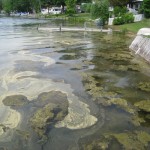
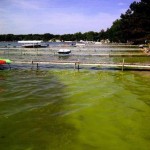
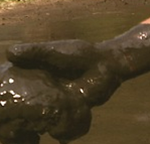
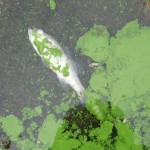
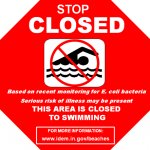
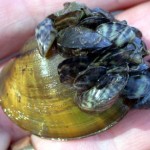















Leave a Reply